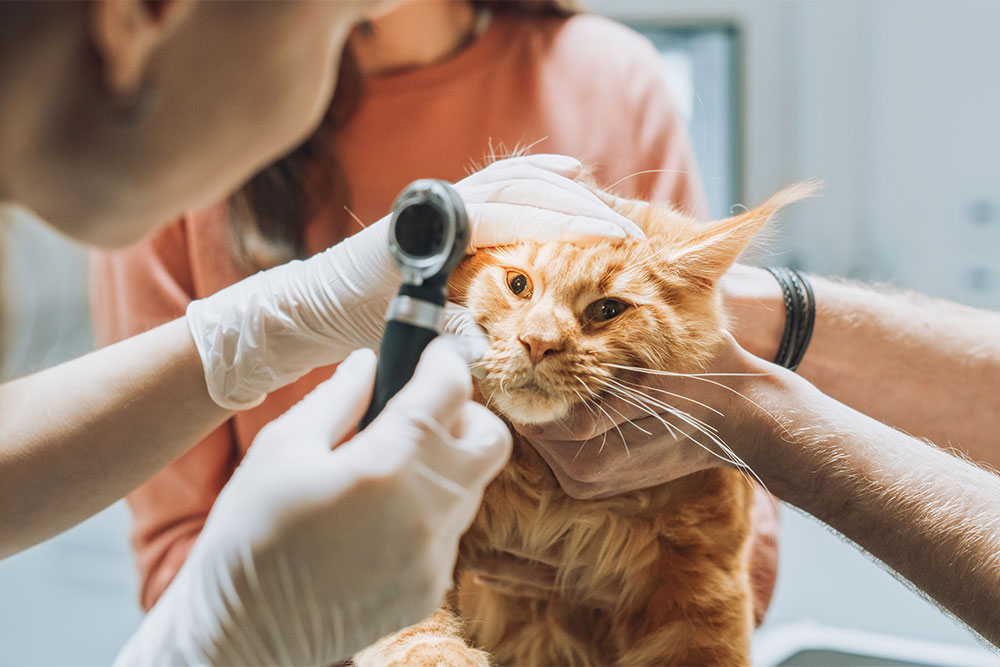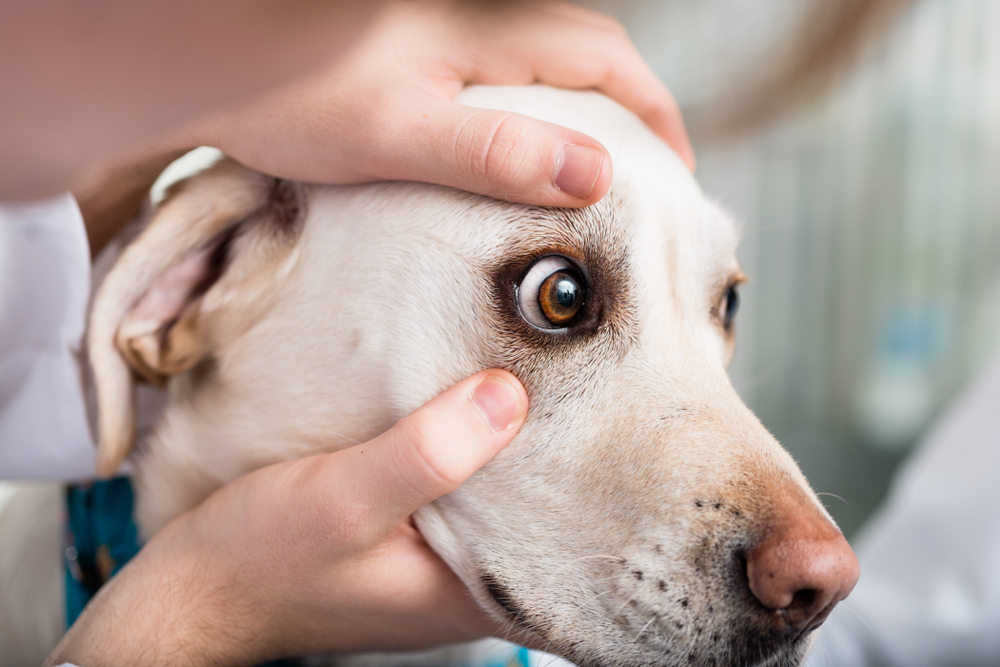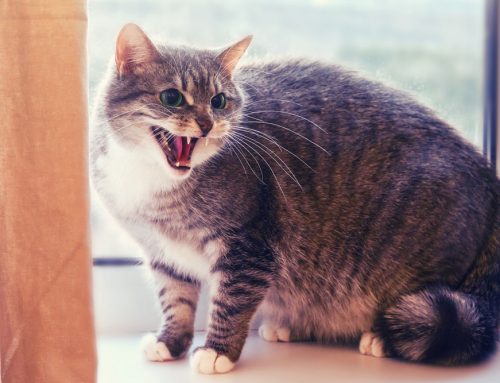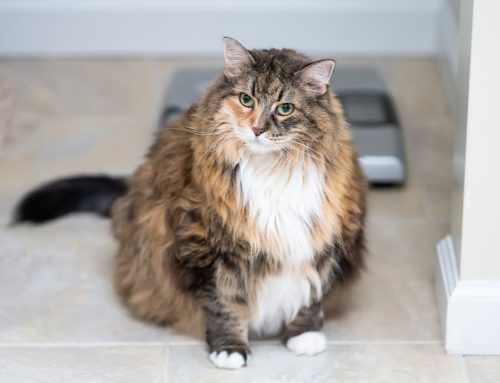When Eye Problems Become Emergencies
A dog who suddenly bumps into furniture, a cat that refuses to open one eye, or a senior pet that squints and paws at their face isn’t just uncomfortable- these can be signs of a true eye emergency. The eyes are among the most delicate structures in your pet’s body, and many conditions progress in a matter of hours rather than days. Without timely treatment, what begins as redness or squinting can quickly lead to irreversible vision loss or even loss of the eye itself.
At Southern Arizona Veterinary Specialty & Emergency Center in Tucson, our AAHA-accredited emergency and ophthalmology teams see firsthand how quickly these cases escalate. With advanced diagnostics, 24/7 emergency services, and specialty care, we’re here to help protect your pet’s sight when every moment counts.
Understanding Common Eye Problems in Pets
Your pet’s eyes are remarkably delicate and vulnerable to a wide range of issues, from mild irritations to sight-threatening emergencies. Recognizing what to look for is key to preserving vision and avoiding long-term damage. It’s critical to understand that what looks minor now can become an emergency in a few hours, so don’t wait or guess for the sake of your vet’s vision.
Recognizing Symptoms of Eye Issues
Behavioral changes are often the first sign of trouble. Dogs and cats in discomfort may hesitate to navigate familiar spaces, bump into furniture, or become nervous in dim lighting. Some paw at their faces repeatedly, rub against furniture, or resist having their head touched. The signs of eye pain should never be dismissed.
Visible symptoms can make the problem clearer. Redness in the whites of the eyes, swelling of the eyelids, or thick or unusual discharge often indicate inflammation or infection. Squinting, excessive tearing, or cloudiness in the cornea point to more serious disease. Any sudden change in how your pet’s eyes look or how they use their vision should be treated as a red flag.
Common Eye Conditions in Pets
Eye conditions can vary widely in severity. Some are easily managed, while others progress quickly and require specialized care.
Conjunctivitis
Conjunctivitis is one of the most common eye issues. It involves inflammation of the thin membrane that lines the eyelids and covers the whites of the eyes. Causes range from allergies and irritants to infections. While conjunctivitis itself may be mild, it can also be a sign of deeper problems that need to be ruled out by a veterinarian.
Corneal Ulcers
Corneal ulcers are painful wounds on the cornea, often caused by scratches, foreign bodies, or trauma. They can also occur secondary to conditions like dry eye. Ulcers can progress rapidly, sometimes in just hours, eating away at the cornea and risking rupture of the eye. Prompt treatment with medications or surgery is critical to save vision.
Cataracts vs. Nuclear Sclerosis
Many pet owners notice their older pet’s eyes developing a bluish haze. Distinguishing cataracts vs. nuclear sclerosis is essential. Nuclear sclerosis is a harmless aging change that causes a bluish tint but minimal impact on vision. Cataracts, however, are opaque changes in the lens that block light and can cause partial or complete blindness if untreated.
Dry Eye (KCS)
Keratoconjunctivitis sicca (KCS), or dry eye, is a common and painful condition where the tear glands don’t produce enough lubrication. Tears are critical for protecting and nourishing the cornea. Without them, pets develop thick discharge, redness, squinting, and constant irritation. Over time, the lack of tear film causes scarring, pigmentation, or even corneal ulcers that threaten vision. KCS is typically a lifelong condition requiring daily treatment with tear-stimulating medications and artificial tears, but with proper management, most pets remain comfortable and retain vision.
Cherry Eye
Cherry eye occurs when the gland of the third eyelid prolapses, creating a visible red mass at the inner corner of the eye. While it may not always cause immediate pain, the condition interferes with tear production and leaves the eye vulnerable to dryness and secondary infections. Surgery is often recommended to replace, not remove, the gland, since the gland contributes significantly to tear production. Without treatment, pets may develop chronic irritation and dry eye.
Entropion
Entropion is a condition in which the eyelid rolls inward, causing the eyelashes or hair along the lid to scrape against the cornea. This constant friction can lead to painful ulcers, scarring, and impaired vision if left untreated. Certain breeds, especially those with loose or wrinkled skin, are more prone to entropion. Surgical correction is typically necessary to restore comfort and prevent ongoing corneal damage.
Pannus
Some breeds, particularly German Shepherds, are at higher risk for pannus, a progressive inflammatory condition that affects the cornea. This immune-mediated disease often appears as a pink, raised lesion that gradually spreads across the surface of the eye, clouding vision. Because pannus is chronic, it requires lifelong management with topical medications to control inflammation. Without consistent treatment, the disease can cause blindness over time.
Cancers and Tumors
Cancers and tumors can appear as swellings, sores, or pigmented spots on or around the eye, often mimicking less serious conditions. Because these growths may look harmless at first, they are sometimes overlooked until they begin to interfere with vision, cause bleeding, or lead to visible discomfort. At Southern Arizona Veterinary Specialty & Emergency Center, we offer full oncology services and advanced cancer treatments, including diagnostics and tailored therapies.
When Eye Problems Become Urgent
Not every eye issue is an emergency, but some can cause irreversible vision loss within hours. Knowing which signs to treat as urgent can save your pet’s sight.
Ocular Emergencies
Glaucoma is one of the most time-sensitive eye emergencies. In glaucoma, fluid builds inside the eye, raising pressure to dangerous levels. The result is severe pain and rapid destruction of the optic nerve. Signs include a cloudy, enlarged eye, a dilated pupil, squinting, and sudden behavior changes. Immediate veterinary care is the only chance to preserve vision.
Lens dislocation occurs when the lens slips out of its normal position, often in predisposed breeds like terriers. This can block drainage, leading to glaucoma. Prompt diagnosis and surgery are often required.
Sudden blindness may be caused by retinal detachment, optic nerve disease, Sudden Acquired Retinal Degeneration, or brain conditions. Quick intervention can sometimes reverse the problem or slow progression.
Injuries are an especially common emergency. Foxtails can burrow into the eye, puncturing delicate structures. Cat claws, thorns, or household chemicals can cause scratches or burns. Sand blown into an eye progresses to ulceration if not removed promptly. Even minor-looking injuries can progress into corneal ulcers or infections.
Treating Eye Problems in Pets
Professional Care at Southern Arizona Veterinary Specialty & Emergency Center
Our ophthalmology services offer advanced imaging, tonometry (eye pressure measurement), and specialized surgical care. These tools allow accurate diagnosis of conditions that might otherwise be missed.
Because eye conditions can deteriorate in hours, our 24/7 emergency team prioritizes these cases. With access to ultrasound and other advanced diagnostics, we can evaluate even hidden eye structures quickly.
Treatment Options and Home Care
Treatment may include topical or oral medications, surgical intervention, or long-term management. Properly administering eye medications is essential for results, and most owners learn quickly with practice.
Some patients need surgical care, such as cataract removal, glaucoma surgery, or repair of traumatic injuries. Post-surgical recovery usually requires close monitoring, pain control, and restricted activity for best outcomes.
Preventive Measures and Long-term Management
Preventing Eye Problems
Routine exams are the best safeguard against eye disease. Many conditions like KCS or early cataracts progress gradually and may go unnoticed by pet owners until significant damage is done. Early detection allows for simpler, less invasive treatment.
Knowing hereditary eye conditions also helps owners of predisposed breeds make informed choices about breeding and long-term care.
Living with Vision-Impaired Pets
Even if vision loss occurs, pets adapt well with help. Living with a blind pet may require adjusting furniture placement, using baby gates, or relying on verbal cues. With patience, most dogs and cats thrive despite blindness.
For pets with systemic diseases like diabetes or autoimmune conditions, the internal medicine team plays a key role in stabilizing the underlying problems that can worsen eye health.

Protecting Your Pet’s Vision Starts with Recognition
Eye problems can worsen quickly, and rapid intervention often means the difference between saving vision and permanent blindness. Sudden squinting, cloudiness, redness, or obvious discomfort should never be ignored.
Southern Arizona Veterinary Specialty & Emergency Center provides advanced diagnostics, emergency treatment, and specialty ophthalmology services for complex eye conditions. Request an appointment or call (520) 888-3177 if your pet shows concerning eye symptoms- or come in to our 24/7 East-Side location. Our specialists are here to protect both your pet’s sight and their comfort.








Leave A Comment